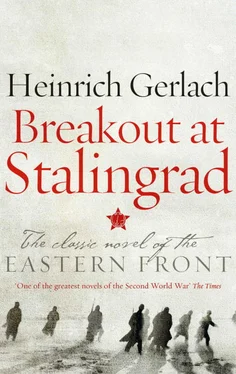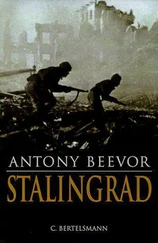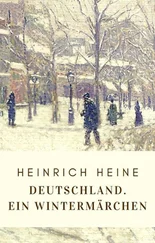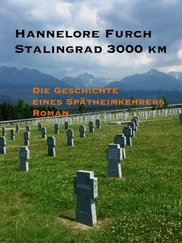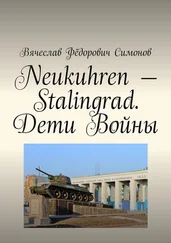Granted, this was something of an exaggeration; Gerlach hadn’t forgotten his years in captivity or even the existence of his Stalingrad novel. But what he could no longer recall was the structure of his novel and the chronology of events. It was in this situation that Gerlach came across an article in Quick on 13 October 1950. It was written by a Munich physician called Dr Karl Schmitz and was entitled ‘The Unconscious Assignment’. In it, Schmitz described the possibility of retrieving repressed memories through hypnosis. The article raised Gerlach’s hopes that he might, after all, be able to remember his lost war novel. The manuscript had been confiscated by the Soviet secret services in 1949, shortly before his own release in April 1950. Accordingly, in January 1951 Gerlach wrote to Dr Schmitz, asking him if he could help him reconstruct his novel. He went on to describe what happened whenever he tried to recall what he’d written:
I’ve tried reconstructing it, but failed. At each attempt, a mist seems to descend. I just can’t do it! The only thing I’ve managed to retrieve is a section that was particularly important to me – my description of Christmas 1942. Over Christmas last year (1950), in a state of high emotion, I was able to get this down on paper in just half an hour, and with no corrections.
Heinrich Gerlach now asked Schmitz if he thought it might be possible ‘to summon up through hypnosis a “content of consciousness” like the one he’d just described so vividly that it could be written down’. Schmitz showed an immediate interest in treating Gerlach. He was just about to publish his book Hypnosis – Its Nature, Scope, and Purpose , and saw an opportunity to generate publicity for hypnosis as a cure – and naturally also for himself – by conducting a high-profile experiment. After Sigmund Freud had ultimately distanced himself somewhat from hypnosis as a therapeutic method, it was only just beginning to gain in popularity once more in Germany at the start of the 1950s. Even so, Schmitz cautioned Gerlach not to invest too much hope in the procedure. This would, after all, be a ‘hypnotic experiment on a grand scale’. All the same, he continued, he still thought it quite possible that he might be able to get Gerlach ‘to relive the events, perhaps even in their entirety’, and hence was keen to chance the experiment. But because Gerlach did not have the necessary funds to pay for the procedure at the time, he was forced to shelve the plan. Initially, Gerlach was very disappointed, but then – at Dr Schmitz’s instigation – he hit upon a new scheme. On 6 July 1951, he wrote to seven leading news magazines, offering them exclusive rights to the story if they would agree to fund the experiment. Within just a few days he received a reply from Quick , inviting him to come to Munich. Gerlach arrived in the city on 15 July, went straight to the magazine’s offices and signed a contract that had been drawn up in advance. It contained the following clause:
You are undergoing a course of treatment by the Munich physician Dr K. Schmitz of No. 20 Jahnstraße with the aim of being able to reconstruct the manuscript you have mentioned… The extent of our obligation to Dr Schmitz shall be entirely at our discretion…
Years later, Heinrich Gerlach recalled that he had regarded the offer by Quick in 1951 as a unique opportunity for everyone involved:
All in all I considered this contract as very fair and advantageous to those concerned. The magazine could be sure of a good story come what may. Dr Schmitz would receive what would surely be a handsome fee for his treatment and his subsequent report [he got 1,750 Deutschmarks from the magazine], and besides he also had the possibility of having the experiment scientifically evaluated. As for me, this procedure gave me the hope that I might soon retrieve my lost manuscript.
So, a classic ‘win–win’ situation, from which all parties could only benefit. The plan was set in motion and the result of the experiment duly appeared in the 26 August 1951 issue of Quick :
At the invitation of Quick , he [Heinrich Gerlach] travels to Munich, and in a course of treatment lasting three weeks, the miracle actually happens: all the years that have been sunk in the abyss of oblivion rise to the surface once more. In agitated outbursts, recorded by the doctor or his assistant, as well as in the notes that Gerlach himself scribbles down while under hypnosis, his experiences come flooding back, and the individual scenes and chapters of the book are brought to life for a second time. Once again, the bridge of consciousness spans the dark chasm of those lost years. After three weeks Heinrich Gerlach returns home and get all his experiences from Stalingrad off his chest and down on paper once more.
As reported in Quick , Gerlach’s ‘treatment’ commenced in mid-July 1951 at Dr Schmitz’s practice. Gerlach, who had only recently moved from Berlin to take up a position as a German and Latin teacher in a grammar school at Brake on the Lower Weser and had just completed his first semester there, was on his summer holidays, giving him the leisure to travel to Munich. Straight away, Schmitz explained to Gerlach that it wouldn’t be possible for him to simply ‘hallucinate’ the novel, as it were, and then write it down in one hit. Nonetheless, they embarked on the experiment on 15 July 1951. To start the ball rolling, in the first hypnosis session Schmitz induced Heinrich Gerlach to cast his mind back to the first chapter of the novel and instructed him to write it down. At this first attempt it immediately became apparent how slim the pickings were, as Gerlach only got a single sentence down on paper – and, what’s more, in a woeful hand that was virtually illegible. Confronted with the result when he was woken from his hypnotized state, he remembered that the sentence he’d scrawled was the first draft of the beginning of the novel, which he’d written in the summer of 1943 before reworking it several times. The sentence read as follows: ‘Winter had sent out a reconnaissance party into the area between the Volga and the Don. The roads were covered with a snowless frost…’ But this outcome also demonstrated that it would be impossible to recreate a manuscript of more than six hundred pages using this method. Schmitz therefore tried putting his test subject Gerlach into a state of hypnosis and getting him to recall one specific event, to which he would then return in the next session. In this way, the plan was to call the course of events around Stalingrad and their fictional depiction to life once more. In the process, Gerlach was woken from hypnosis every ten minutes. In most cases, he was then able fluently to reproduce what he had remembered up to the point where the recollection broke off again. Thereafter, he was put back under hypnosis. The sessions, each of which lasted for around two and a half hours, thus generated a succession of sequels that were also taken down in shorthand by Dr Schmitz’s secretary. A photo of one session, in which Heinrich Gerlach – in the company of Dr Schmitz and his secretary – is seen recalling episodes from his memory was printed in the Quick report, alongside examples of Gerlach’s handwriting.
Heinrich Gerlach himself summarized his observations while under hypnosis two days before the end of the experiment, on 28 July 1951. The preservation of these notes is on the one hand down to the fact that this spectacular experiment was ideally suited for Schmitz to underline the importance of hypnosis. At the same time, the doctor was intent upon drawing conclusions from it regarding the function of memory. However, we are by no means solely reliant upon Schmitz’s account of proceedings, since some years later the working relationship between Gerlach and Schmitz became the subject of an extremely high-profile legal battle that once more caught the public eye. While this was going on, Heinrich Gerlach’s own observations again came under discussion. He had jotted down the following impressions in 1951:
Читать дальше
